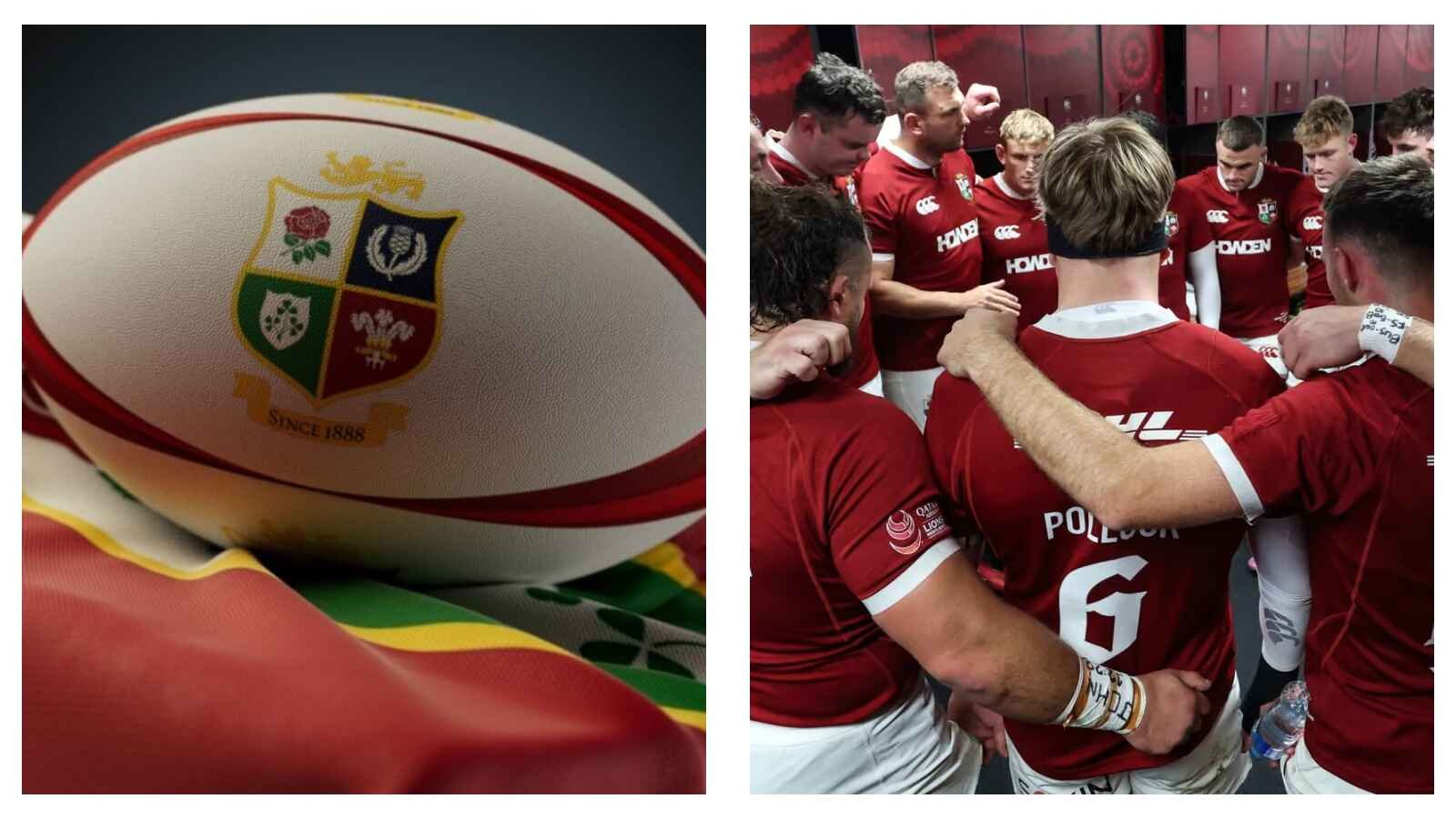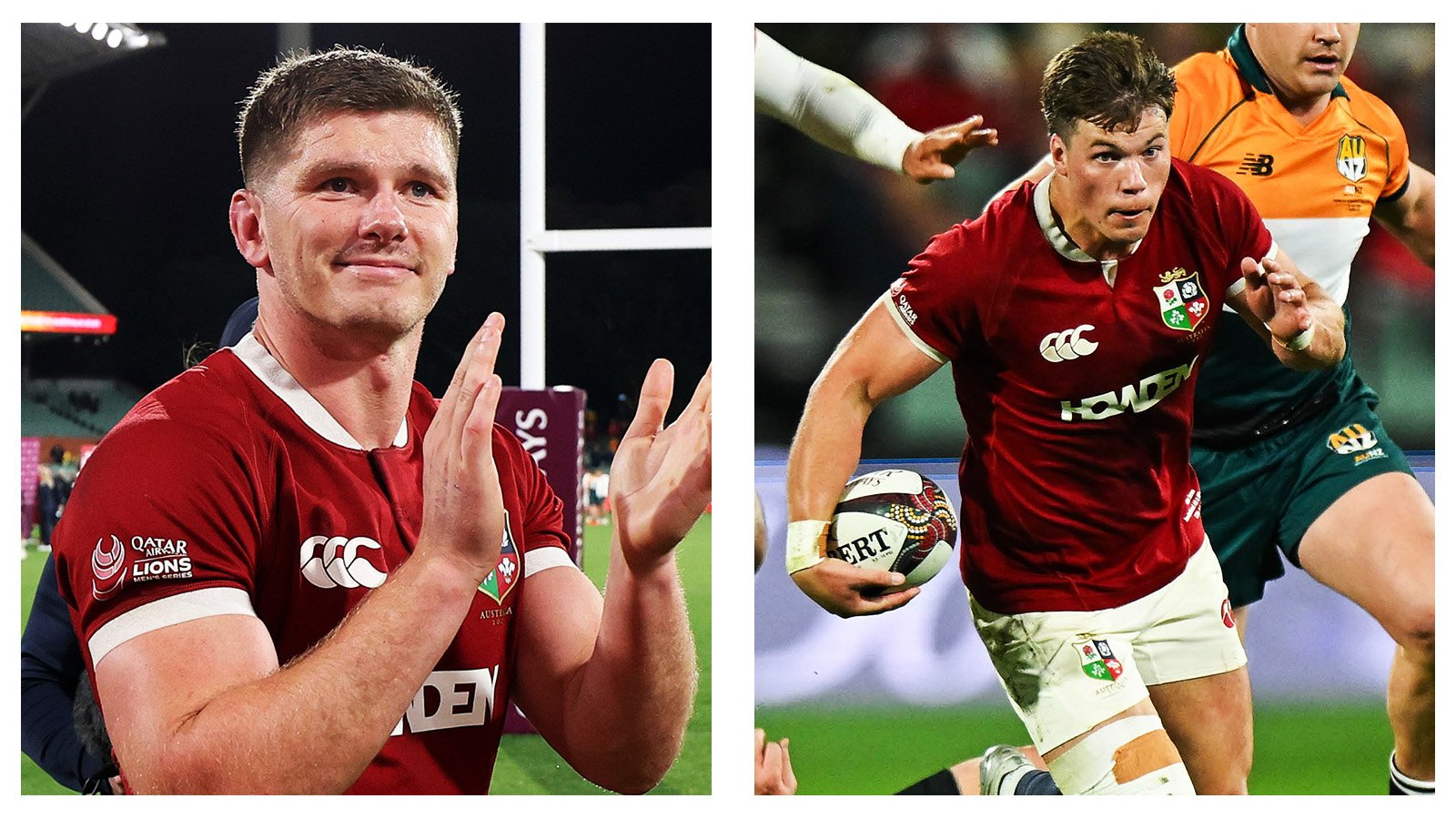British & Irish Lions news: Andy Farrell’s side clinches first Test against the Wallabies in Brisbane
After four long years following a COVID-19-impacted British and Irish Lions tour, saw empty crowds and eerily quiet stadiums in South Africa, the return of top-level Lions Test matches was witnessed on Saturday, July 19.
The sea of red was in full flow, with a sold-out Suncorp Stadium in Brisbane in full support.
And Andy Farrell’s match-day 23 did not disappoint.
After plenty of discourse surrounding selection, tactics and game plan, the Lions came out firing in the opening 40 minutes, going in at the half 17-5 up.
Perhaps the second half saw Farrell’s side take their foot off the gas, allowing Australia back into the game, providing the opportunity for a fragmented Wallabies side to bounce back this weekend in Melbourne.
So, how was the game won, and how did Farrell’s selections play out in the opening Test?
Sports News Blitz rugby writer Jacob Garrett discusses.
A game of two halves
The classic sporting cliché, ‘a game of two halves’ works very well when discussing the opening Test.
In the opening 40, the Lions were flying and looked a cut above their opponents, with three first-half tries, never looking threatened by a flat and slow Australian offense.
In an unexpected moment, the Lions conceded a Max Jorgensen try, who beat full-back Hugo Keenan in a high-ball challenge to score in the corner.
This dominance was in complete contrast in the second half, with the Wallabies holding 63% of possession whilst playing completely in the Lions’ half (highlighted by the Australians holding 64% territory).
So why was this the case?
For me, it came down to the Lions conceding nine penalties, allowing Australia back into the game.
As well as marching up the field due to the over-eagerness of their defensive line.
But, with all this possession and territory, Joe Schmidt’s side did not trouble the Lions on the scoreline.
With only two tries to show for their efforts — one by Western Force star Carlo Tizzano and a consolation try in the final minute by the Queensland Reds half-back, Tate McDermott.
Schmidt’s side lacked cohesive attacking sets, and a minimal amount of go-forward punch with ball in hand, outside of their main man Fraser McReight, who was outstanding in the seven shirt.
The Wallabies really missed Will Skelton and Rob Valetini — two of their biggest athletes in the forward pack.
Alongside an eyebrow-raising selection decision — leaving Angus Bell on the bench — with the Waratah being one of the best ball carriers in the world.
The lack of go-forward left the stars in the outside channels — Joseph Suaalii, Harry Potter and Tom Wright, without any meaningful time on the ball to make their mark on the game.
It’s left Schmidt with a long week ahead to try and patch some glaring holes.
Farrell’s back-row selections pay dividends
Plenty of eyebrows were raised when Farrell selected both of his two openside flankers, with Tom Curry and Tadhg Beirne given the nod over Jac Morgan and Ollie Chessum.
The latter pair have been two of the best-performing flankers on tour.
Farrell’s backing of both Beirne and Curry shows the level of value he puts on ‘Test-match animals’, a term they’ve been associated with over the years.
Their ability to perform in pressure Test matches, and, no matter their form (which during the warm-up games had been poor), can bring out massive performances when it counts most.
Beirne won Player of the Match, having led the tackle count at 23, alongside his three breakdown steals.
He was truly exceptional in defence and limited any opportunity for the Wallabies to launch an attacking shape through fast ball.
YOU MAY ALSO LIKE: British & Irish Lions news: Lions deliver professional performance against star-studded AU-NZ Invitational side
Then you have the English star, in Curry, who was brilliant.
The Sale Shark was everywhere on Saturday, melting the Wallabies’ ball carriers.
But it was his ball-in-hand work that was really impressive.
An example of this would be Dan Sheehan’s try in the second half, which illustrated Curry’s value.
After reading the overthrow in the lineout for Australia, Curry carries up the guts and lays off a lovely offload to Finn Russell, who, in turn realises the speed of Huw Jones.
The Lions then play a standard three-man arrow shape before flashing back to the blind side where Tom Curry has shifted to, with him making the most simple but effective draw and pass to put Sheehan away in the corner.
This passage of play highlights both his technical skill and his work rate, from the offload and draw-and-give, to the outright effort to cross the entire pitch to end up the second-to-last man in the attacking line.
It was truly a brilliant showing from the openside.
This was coupled with his well-taken try, where he dove over from short range, topping his excellent performance in style.
READ NEXT: British & Irish Lions news: A guide to the history and cultural significance of the Lions
Back-three question marks
The back-three selection was pretty much a foregone conclusion following the injury to Blair Kinghorn.
With Tommy Freeman in unbelievable form alongside the consistency of James Lowe and Hugo Keenan, the trio was expected to be a safe one, but the Wallabies really tested them.
For me, they did not live up to expectations.
Wingers Jorgensen and Potter, alongside scrum-half Jake Gordon, provided a challenging kick-heavy, competitive aerial battle.
The first-half try for Australia was a key example of the Lions’ back-three issues.
Max Jorgensen out-muscled Keenan (who had lost around six kilograms due to illness) in the air.
Regarding Freeman, despite his consistent aerial work, his decision-making and execution was not up to scratch, kicking two balls out on the full during a few kick challenges.
It was Irishman Lowe that was probably the most disappointing in the Test.
Following an up-and-down tour, Farrell backed him in a similar way he did Beirne and Curry.
But, unlike his team-mates, he didn’t live up to the ‘Test-match animal’ moniker.
A lot of his decision-making was relatively poor, carrying when it was time to go wide and not having the pace to beat his opposite man.
So, the question is, will Farrell stick or twist?
With Mack Hansen impressing on tour, Kinghorn returning from injury, and Scot Darcy Graham called up, could Farrell make changes in the back three?
Personally, I think that Farrell will back Freeman due to his finishing ability alongside James Lowe, as he is so important to the strategy.
But, with Hugo Keenan not looking 100%, I think that Farrell may look to bring in Kinghorn for a more physical presence in the 15 shirt.
READ MORE: British & Irish Lions news: Complete fixture list and opposition breakdown for Australia tour
Looking ahead to Test two in Melbourne
All eyes are on the iconic MCG, with the Lions in front 1-0 in the series and the Wallabies looking to right a lot of wrongs from their Brisbane struggles.
With Schmidt’s side gaining momentum, and a massive crowd close to 100 thousand in Melbourne, along with the potential returns of Skelton and Valetini, I think Test two may be a lot tighter than the first encounter.
If Schmidt can tighten up his attacking structure and selection decisions regarding his power up front, I think Farrell and his side will be given more of a game.
And then, it's game on in the series before heading into Test three.
READ NEXT: British & Irish Lions news: Six Wallabies to look out for on the eagerly awaited tour to Australia





